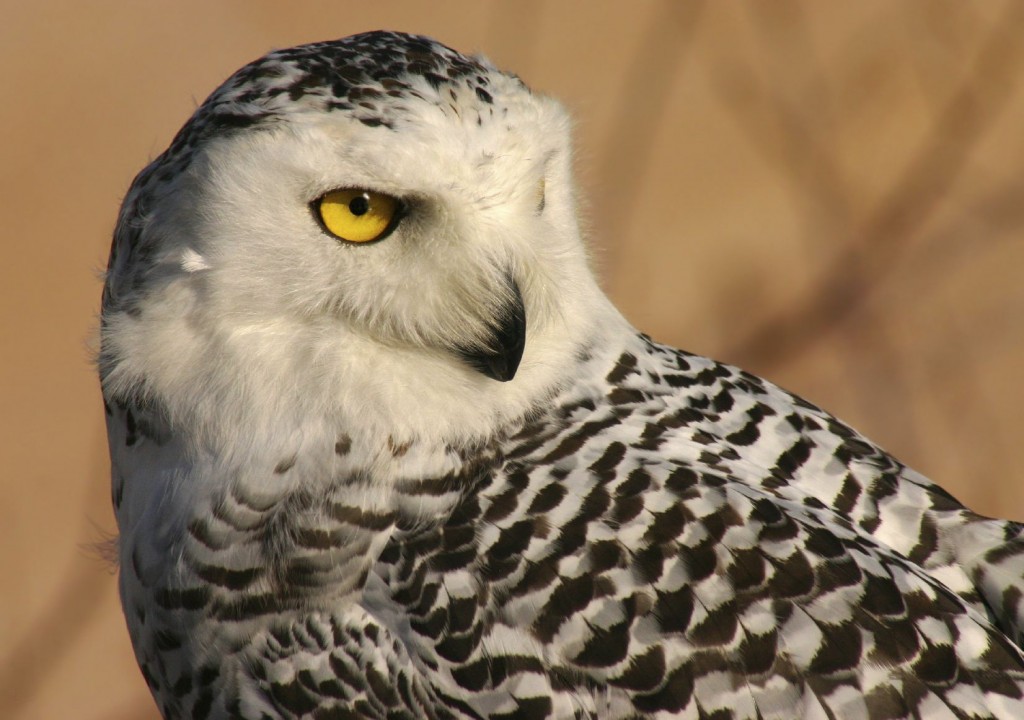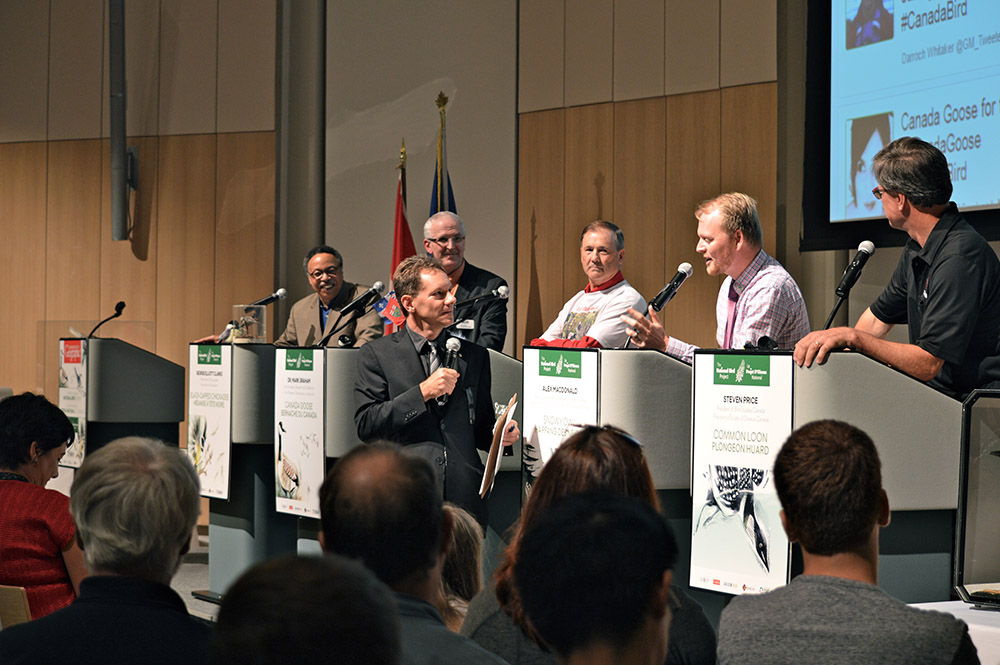The Snowy Owl to Represent Canada

Alex MacDonald, Senior Conservation Manager. Photo by Tamam Ahmed Jama
Last night at the Canadian Museum of Nature, the Royal Canadian Geographic Society, in partnership with Bird Studies Canada, staged a debate for The National Bird Project. There are currently 5 finalists: the Common Loon, Snowy Owl, Black-capped Chickadee, Gray Jay and Canada Goose. The debate featured 5 panelists, each making points as to why their bird should be named Canada’s national bird. Our very own Senior Conservation Manager, Alex MacDonald, was one of the panelists and he made the argument that the Snowy Owl should be the winner.
Snowy Owl, Harfang des neiges, Bubo scandiacus, Hedwig; these are the names of Canada’s quintessential national bird. The Snowy Owl is, like Tilley Hats and the Robertson screwdriver, a symbol synonymous with Canada and this nation’s northern disposition – the true north, strong and free.
The Snowy Owl is uniquely adapted to life in the unforgiving Canadian winter and the brief Arctic summer. It has its own insulated winter boots in the feathers along its legs; it sports thick insulating feathers on its body that, lacking pigment, can hold more insulating air; and, despite being an owl, it’s just as comfortable hunting during the long Arctic summer days as it is during our northern winter nights. The Snowy Owl has the patience of a tectonic plate when hunting. It can hunt for seabirds on ice flows and at polynyas where most birds would simply starve or freeze. And it also knows how to deal with an all-you-can-eat buffet if summer lemmings are in good supply. If the going gets tough in hunting terms, Snowy Owls get going – migrating as far south as they must to find adequate food.
But nonetheless, the Snowy Owl is the only finalist that can actually be found all across Canada throughout the year, from Alert to the US border and on both coasts. And other than the Black-capped Chickadee and the Canada Goose it’s the only finalist whose annual range includes the Prairies. So remember: a vote for the Gray Jay or the Common Loon is a vote against Canada’s wheat farmers.
It’s true that the Snowy Owl is also found in northern Eurasia… But of course Canada’s national bird should also be found outside of Canada – part of being Canadian is being an easily identifiable foreign national wherever you travel!
Finally, it’s 2016, Folks. The Snowy Owl is a great example of Canadian girl-power. The females are not only physically larger and stronger, but are also socially dominant over the males. My Canada includes equal opportunities for women and female Snowy Owls. And yours should too.
Consider this, the mere fact that the Snowy Owl is the only true bird of prey among the finalists, and as such could – if need be – prey upon any of these birds, is reason enough to crown the Snowy Owl tonight’s victor.
[one_half] [/one_half] [one_half_last]
[/one_half] [one_half_last]

The panelists. Photo by Photo by Tamam Ahmed Jama
[/one_half_last]
Consider also that Canada is a parliamentary democracy and a constitutional monarchy, and as such Canada has a Parliament, which is what we call a group of owls. We don’t have a government framework based on an “asylum”, a “banditry”, a “gaggle”, or a “scold”. Canadians, our democracy is built around a Parliament and for that reason alone the Snowy Owl is the only logical choice for national bird.
Finally, I asked my kids, aged 3 and 6, why the Snowy Owl should be Canada’s national bird. They told me, without a moment of hesitation, “because we like it, Daddy”. It just rips my heart out to think that Canadians would collectively look at my kids in the eyes and say, “no thanks, kids, we’ll choose a bird can’t walk, or one that hide rotting food instead”. Please don’t make my kids cry, Canada. Please…
If you agree with Alex, show your support on Twitter with #TeamOwl and #CanadaBird! And if you would like to learn more about the raptors and owls, check out our new e-Book!



